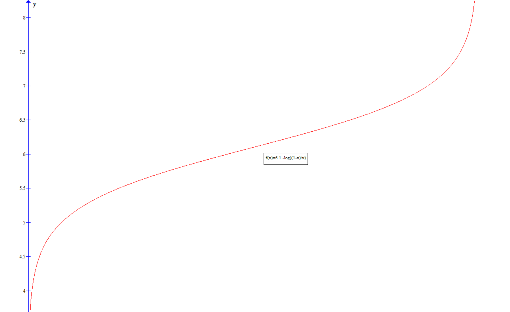Blood buffers
Problem
In this question [$A$] means the concentration of the chemical $A$ at equilibrium.
For a balanced chemical equation, where $A, B, C$ and $D$ are chemicals in aqueous solution and $a, b, c, d$ are whole numbers,
$$ aA + bB \rightleftharpoons cC + dD+ eH_2O $$
the law of mass action tells us that for a fixed temperature, there is a constant $K$ (called the equilibrium constant) such that
$$
\frac{[C]^c[D]^d}{[A]^a[B]^b} = K
$$
(note the absence of the solvent concentration $[H_2O]$ ).
In the blood, the carbonic-acid-bicarbonate buffer prevents large changes in the pH of the blood. Chemically, it consists of two reactions which are simultaneously in equilibrium
$$H^+ +HCO^-_3+H_2O\rightleftharpoons^{K_1} H_2CO_3+H_2O \rightleftharpoons^{K_2} 2H_2O+CO_2$$
Show that
$$
pH =pK -\log \left(\frac{[CO_2]}{[HCO^-_3]}\right)\quad \mbox{where }K=\frac{1}{K_1K_2}
$$
Think about this equation. It shows that the pH of the blood is dependent on the ratio of the concentrations of $CO_2$ and $HCO^-_3$. These are large in the blood, so small changes in the relative concentrations leads to very small changes in the pH of the blood. They act as a 'buffer' against pH change.
Now, make a new variable $x$ to be the fraction of the buffer in the form of $HCO^-_3$. Thus,
$$
x = \frac{[HCO^-_3]}{[HCO^-_3]+[H_2CO_3]+[CO_2]}
$$
Show that
$$
pH = pK-\log\left(\frac{1}{x}-1 -K_1[H^+]\right)
$$
By taking the value $pK=6.1$ and treating $K_1[H^+]$ as very small, reproduce the titration curve
Extension:
1. Why is it numerically valid to ignore the $[H^+]$ term in the equation giving rise to the graph?
2. With the assumption that $K_1[H^+]=0$, use calculus to show that the second derivative of the pH is zero when $x=0.5$. Graphically, what does this correspond to?
Getting Started
Set up two simultaneous equations and solve these. Be sure to use all of the information provided.
This problem will require the confident use of differentiation of logarithms and the chain rule.
Student Solutions
At a glance this initial part of the question appears exceptionally tricky. However, by breaking the simultaneous equilibrium into two separate equilibria, the problem is actually reasonably easy to analyse.
The first of these equilibria is:
$$H^+ + HCO_3^- + H_2O \rightleftharpoons^{K_1} H_2CO_3 + H_2O$$
From the original definition of K, it can be seen that:
$$K_1 = \frac{[H_2CO_3]}{[H^+][HCO_3^-]}$$
The second equilibrium is:
$$H_2CO_3 + H_2O \rightleftharpoons^{K_2} 2H_2O + CO_2$$
Again, from the definition of K, we can easily see that:
$$K_2 = \frac{[CO_2]}{[H_2CO_3]}$$
Eliminating $[H_2CO_3]$ from these gives:
$$ K_1[H^+][HCO_3^-] = \frac{[CO_2]}{K_2} $$
Rearranging:
$$ [H^+] = \frac{[CO_2]}{K_1K_2[HCO_3^-]}$$
Using the definition of pH allows:
$$ pH = -log_{10}\left(\frac{[CO_2]}{K_1K_2[HCO_3^-]}\right)$$
$$ = -log_{10}\left(\frac{1}{K_1K_2}\right) -log_{10}\left(\frac{[CO_2]}{[HCO_3^-]}\right)$$
$$ = -log_{10}\left(\frac{1}{K}\right) -log_{10}\left(\frac{[CO_2]}{[HCO_3]}\right)$$
$$ = pK -log\left(\frac{[CO_2]}{[HCO_3]}\right)$$
For the second part of this question, we are trying to prove that the inside of the logarithm is equivalent in each equation. Starting with the final equation and working in reverse:
$ \frac{1}{x} -1 -K_1[H^+]$
$ = \left(\frac{[HCO_3^-] + [H_2CO_3] + [CO_2]}{[HCO_3^-]}\right)\ -1\ -\left(\frac{[H^+][H_2CO_3]}{[H^+][HCO_3^-]}\right)$
$ = \left(\frac{[H_2CO_3]}{[HCO_3^-]}\right) + \left(\frac{[CO_2]}{[HCO_3^-]}\right) - \left(\frac{[H_2CO_3]}{[HCO_3^-]}\right)$
$= \left(\frac{[CO_2]}{[HCO_3^-]}\right)$
This is as required.
By treating $K_1[H^+]$ as very small, we can neglect it, and as the pH expression becomes:
$$pH = 6.1 - log( \frac{1}{x} -1)$$
$$ = 6.1 - log\left(\frac{1-x}{x}\right)$$
Plotting this gives the required buffer curve:

Extension:
1) We are dealing with pHs in the region of 4- 8, and so the $[H^+] = 10^{-4} to 10^{-8}$. This is very small compared to the $\frac{1}{x} -1$ term, and so can be neglected. Additionally, because this quantity is subsequently logged, such a small difference is made even smaller, such that it can certainly be neglected.
2) This part of the problem requires a solid grip on the chain rule, and logarithmic manipulation. It is solved as shown:
$$pH = 6.1 - log\left(\frac{1-x}{x}\right)$$
$$ = 6.1 - \frac{ln\left(\frac{1-x}{x}\right)}{ln(10)}$$
$$ = 6.1 - \frac{1}{ln(10)}\left(ln(1-x) -ln(x)\right)$$
$$\therefore \frac{d(pH)}{dx}= \frac{1}{ln(10)} \left(\frac{1}{1-x} + \frac{1}{x}\right)$$
$$\therefore \frac{d^2(pH)}{dx^2} = \frac{1}{ln(10)} \left(\frac{1}{(1-x)^2} -\frac{1}{x^2}\right) = 0$$
$$ \frac{1}{(1-x)^2} = \frac{1}{x^2}$$
$$ x =0.5$$
Thus the second derivative of the pH is zero when x = 0.5. This corresponds to a point of inflection on the graph, which is where the gradient of the gradent is zero: at this point the curve ceases to decrease in gradient and begins to again increase in gradient.
